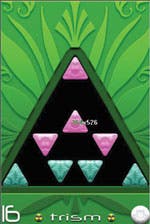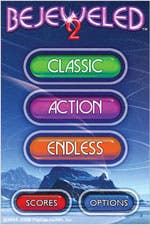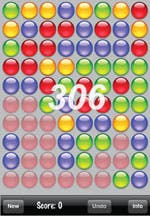As an iPhone developer, I am always checking out the competition to see what the more successful applications are all about. I especially pay attention to reviews submitted by the users. What do they like about the game? What don’t they like? What suggestions do they have to make the application better?
This has nothing to do with copying someone else’s idea. It is driven by a healthy admiration and respect for the teams that created the apps, and it’s about trying to find out what the apps have that make them a hit. The reviews give me a direct view into the mind of the user. Traditionally, a company could spend millions of dollars on marketing research to get this information, but it’s available for free on the App Store!
Gameplay does have a lot to do with a game’s rise in popularity, but great gameplay alone is not enough to propel a game into the coveted, Top 25 apps list. Marketing has a lot to do with an apps success, but I’m a software engineer, and that’s a subject for another article. What I will do is look at some of the successful games that have influenced the direction of our development and discuss the lessons we learned from those games.

Trism
$2.99; trism.demiforce.com
 I purchased this very addictive game because I had heard a lot of buzz about it over the past few months. In fact, the success story behind Trism is one of the factors that got me to start developing for the iPhone.
I purchased this very addictive game because I had heard a lot of buzz about it over the past few months. In fact, the success story behind Trism is one of the factors that got me to start developing for the iPhone.
Lesson Learned: Give the player something to work towards
The key influence this game had on the development of our game, Similis Deluxe ($2.99, free version available; j2ke.com), was the concept of achievements. A great game gives a player something to work towards, and it has to be more than simply topping your last high score. This gives the player a sense of accomplishment. Achievements, awards, etc., are such an important part of games these days that even the major game consoles implement them. Achievements are a must!
Bejeweled 2
$2.99; popcap.com/promos/iphonebejeweled2
 This game is extremely popular and has been in the Top 25 for several months now. Bejeweled 2 existed as a game on other platforms before it was ported to the iPhone, so it had name recognition that contributed to its success. But that name recognition was earned by delivering a great, engaging game. The iPhone version has three modes of game play: Classic, Action, and Endless. The basic challenge of matching three or more colored jewels remains the same in each mode, but each has its own unique twist.
This game is extremely popular and has been in the Top 25 for several months now. Bejeweled 2 existed as a game on other platforms before it was ported to the iPhone, so it had name recognition that contributed to its success. But that name recognition was earned by delivering a great, engaging game. The iPhone version has three modes of game play: Classic, Action, and Endless. The basic challenge of matching three or more colored jewels remains the same in each mode, but each has its own unique twist.
Lesson Learned: Give the player a choice
The key influence Bejeweled 2 had on the development of our game was its multiple game modes. A great game offers the player choices about how it can be played. By having different game modes, you increase the probability that your game will appeal to a larger audience.
reMovem
$0.99, Free versions also available; removem.mundue.net
 This was the very first game I installed on my new iPhone 3G. It was also available on other platforms before it was ported over to the
iPhone, but it wasn’t as popular as Trism or Bejeweled 2. ReMovem is almost Zen-like in its simplicity, having only two screens: the main game screen and an options screen. According to the developer, the simplicity of the game was intentional. It’s a strategy that has paid off very well for him!
This was the very first game I installed on my new iPhone 3G. It was also available on other platforms before it was ported over to the
iPhone, but it wasn’t as popular as Trism or Bejeweled 2. ReMovem is almost Zen-like in its simplicity, having only two screens: the main game screen and an options screen. According to the developer, the simplicity of the game was intentional. It’s a strategy that has paid off very well for him!
Lesson Learned: Great games are simple and fun to play
I learned that a game does not have to be complicated to be fun to play. This is especially important if you are targeting the casual gamer. In my opinion, this is the most important lesson.
Other lessons learned:
I’ve also gleaned some common lessons from all three games:
- These games can be picked up, played for 30 seconds, and put back down without losing progress or points. Lesson learned: A casual game should not require a minimum investment of time to play.
- With all three games, the player can understand everything required to play and enjoy the game in minutes. Lesson learned: Games should be easy to learn.
- You don’t have to use exaggerated body movements to play these games. Shaking or tilting your device to control a game may be fun, but it can draw the attention of others if you are standing in line at the bank or enduring a long, dry business meeting. Lesson learned: Games should be designed so that they don’t draw undo attention to the player.
- All three games require you to think ahead, to quickly recognize patterns, and in general, exercise your problem solving skills. Lesson learned: Games should be intellectually challenging as well as fun.
I like the three games I’ve described in this article because they provided me with lessons on what a good game should be and because they are fun to play. You, too, probably have some favorite apps or games on your iPhone that you regularly use. If you’re a developer, they deserve closer attention. Study them and determine why you like them. Read user reviews and note what others are saying about them.
Take time to check out the competition—there are lessons to be learned!

